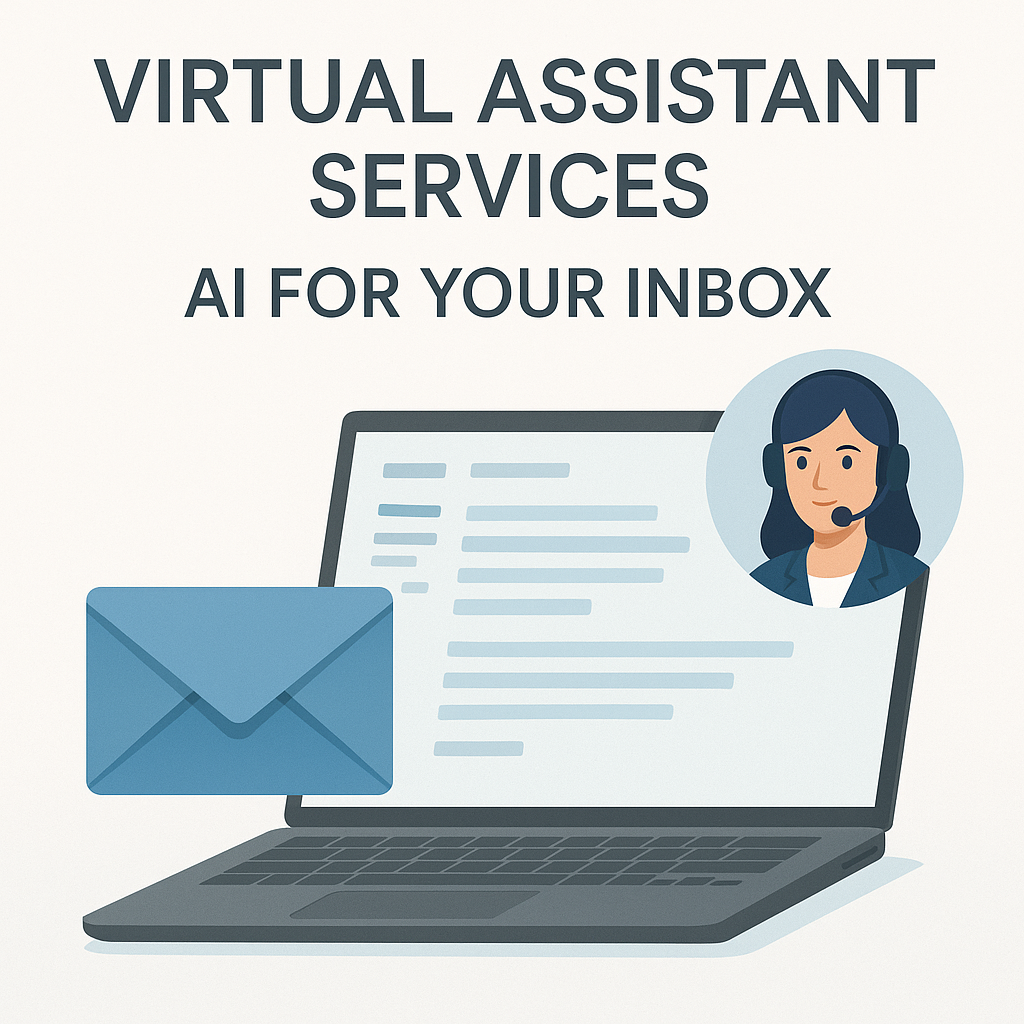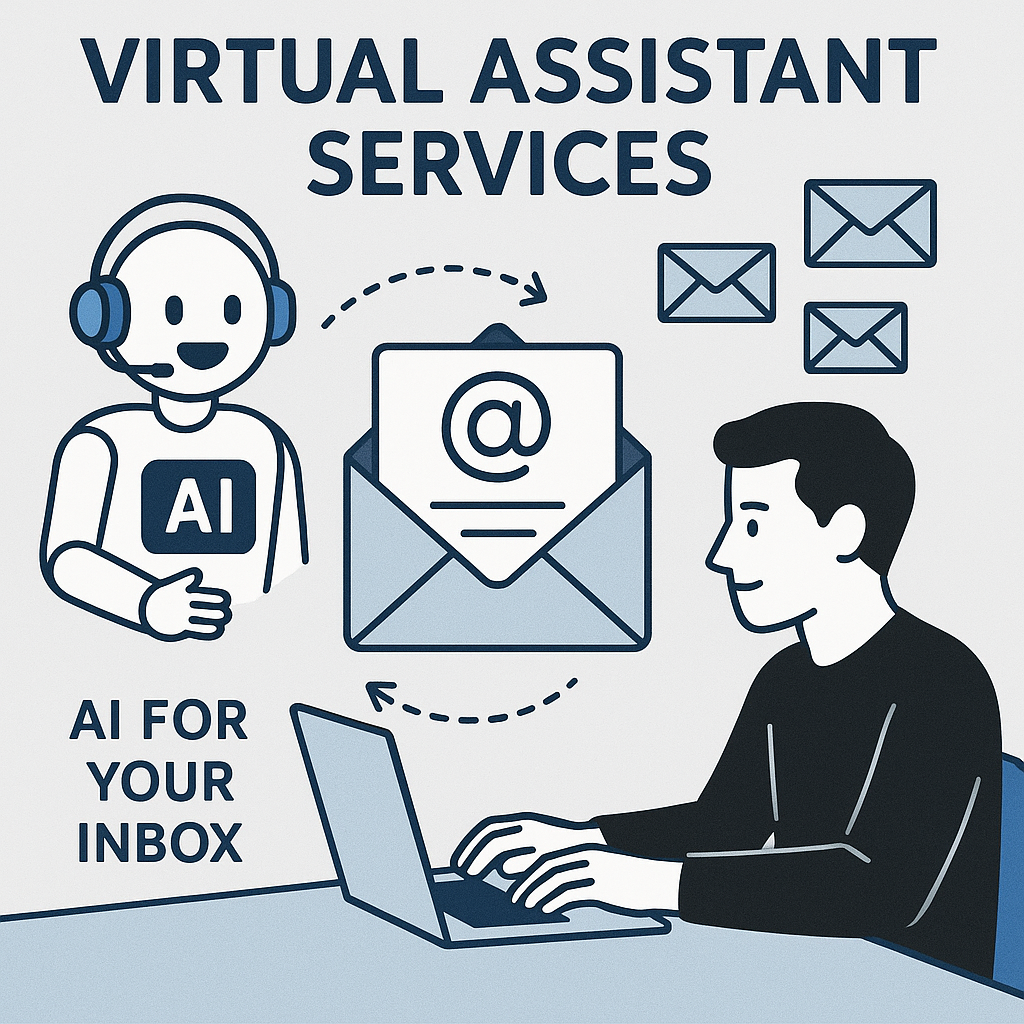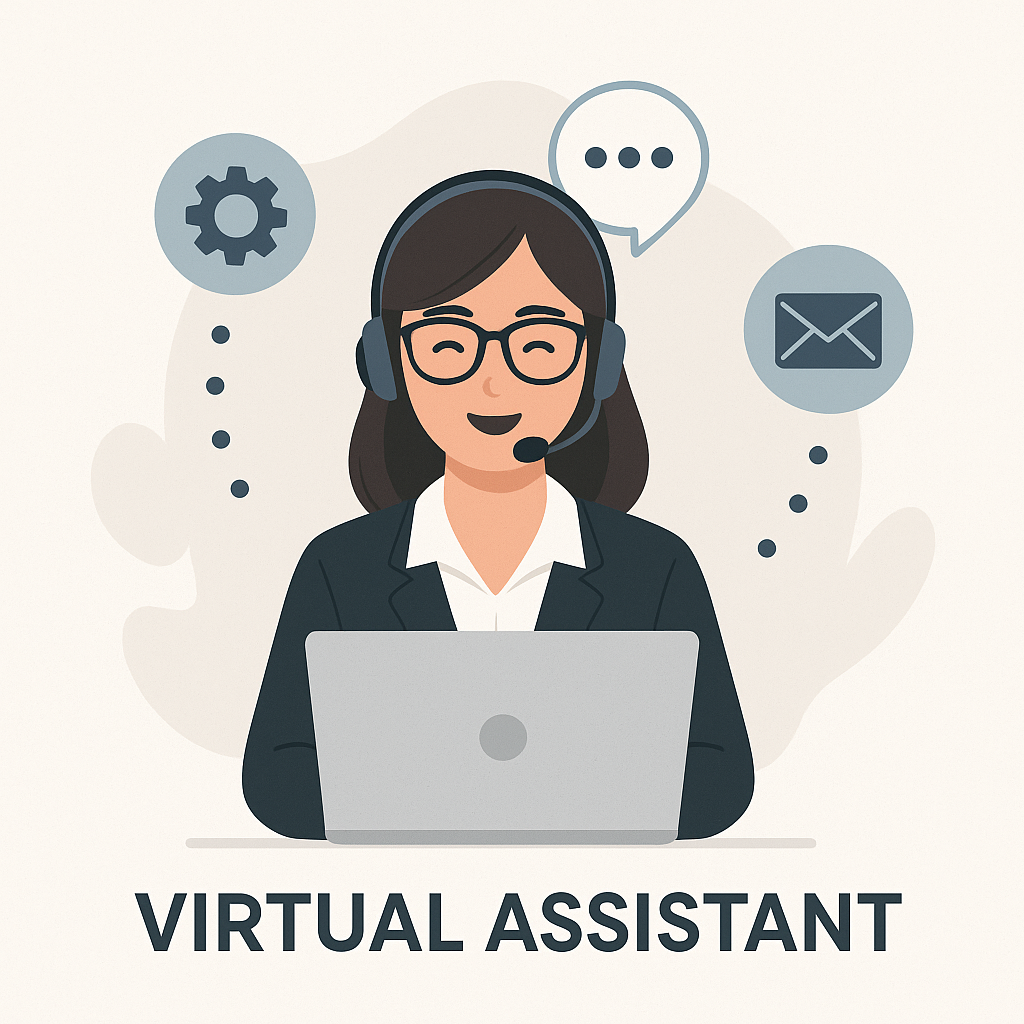Virtual Assistant Services: AI for Your Inbox

In today's hyper-connected world, the humble inbox has become a battleground. For professionals across all industries, email overload isn't just an inconvenience; it's a significant productivity drain, stealing precious hours that could be spent on strategic thinking, client engagement, or core business operations. The constant barrage of messages demands immediate attention, leading to fractured focus, missed deadlines, and the nagging feeling of always being behind. But what if there was a way to reclaim your time and transform your inbox from a source of stress into a streamlined hub of efficient communication? Enter the era of virtual assistant services powered by artificial intelligence, specifically designed to conquer your inbox.
The evolution of AI has brought forth sophisticated tools that go far beyond simple auto-responders. We're now seeing the rise of intelligent, autonomous agents capable of understanding context, prioritizing tasks, and even acting on your behalf. These AI-driven solutions are not just automating tasks; they are fundamentally changing how we manage our digital communications, offering a glimpse into a future where your inbox works for you, not the other way around. This article will explore how these advanced virtual assistant services, particularly those leveraging AI, can revolutionize your email management, boost your overall productivity, and help you regain control of your workday.
What are Virtual Assistant Services for Email?
Traditionally, virtual assistant (VA) services for email involved hiring a human assistant to manage your inbox. This could include tasks like:
- Sorting and filtering emails
- Responding to common inquiries
- Scheduling meetings based on email requests
- Organizing email threads
- Unsubscribing from newsletters
- Flagging important messages
While effective, human VAs have limitations. They require training, have working hours, can be costly for round-the-clock support, and may struggle with the sheer volume and speed of modern email traffic. Furthermore, their capacity is limited by human multitasking abilities.
The landscape is rapidly shifting with the integration of AI. Virtual assistant services for email are now increasingly augmented by AI, transforming them into intelligent systems. These AI-powered assistants can operate with greater speed, accuracy, and scalability. They learn your preferences, understand nuances in communication, and can handle a much larger volume of tasks autonomously. Unlike a human VA who needs explicit instructions for every action, an AI assistant can be trained on your communication patterns and preferences to proactively manage your inbox, making it a far more efficient and cost-effective solution for many businesses. As one source puts it, these systems typically operate through direct integration with your email platform like Google or Outlook, and calendar, to create a seamless experience across your digital workspace. AI Executive Assistant vs. Virtual Assistant: Who Handles Your Inbox Better.
How AI Transforms Email Management: Autonomous Agents for Inbox Tasks
The true game-changer in AI-powered email management is the concept of autonomous email agents. These are sophisticated AI programs designed to perform specific email-related tasks with minimal human oversight. Think of them as specialized digital assistants that don't sleep, don't get distracted, and can process information at lightning speed. They are the engine behind effective AI email automation.
Here’s how these autonomous agents are revolutionizing inbox tasks:
- Intelligent Sorting and Filtering: Beyond simple keyword filters, AI agents can understand the context and intent of an email. They can differentiate between urgent client requests, internal team communications, marketing newsletters, and spam with remarkable accuracy, ensuring critical messages are always at the forefront.
- Prioritization: AI algorithms can analyze sender reputation, keywords, urgency indicators, and your past interactions to rank incoming emails by importance. This means you can focus on what truly matters without sifting through less critical messages.
- Automated Responses and Drafting: For routine inquiries or follow-ups, AI agents can draft contextually relevant responses based on learned patterns or pre-defined templates. They can even suggest replies for you to quickly review and send, significantly reducing the time spent on repetitive communication. This is a core aspect of email task automation.
- Action Item Extraction: AI can scan emails to identify actionable items, deadlines, and meeting requests. It can then automatically add these to your calendar or task list, ensuring nothing falls through the cracks.
- Meeting Scheduling: Agents can analyze email exchanges proposing meeting times, find optimal slots based on your calendar availability, and send out invitations, effectively automating the often tedious back-and-forth of scheduling.
- Summarization: For lengthy email threads or complex documents attached to emails, AI can generate concise summaries, giving you the key information at a glance.
These agents are far more than just rule-based systems. They leverage natural language processing (NLP) and machine learning to continuously improve their performance. For instance, AI virtual assistants can optimize inbox management by efficiently categorizing messages and automating response tasks. Top Tasks to Automate with an AI Virtual Assistant highlights how AI can streamline classification and response processes. Similarly, the benefits of an email-based AI virtual assistant can be seen in their evolution from basic chatbots to sophisticated systems capable of replicating human-like judgment for complex document-based tasks. The benefits of an email-based AI virtual assistant on AWS explores this further.
AI-Augmented Productivity Frameworks: Beyond Basic Automation
While autonomous agents handle individual tasks, AI productivity frameworks take this a step further by orchestrating these agents into cohesive, intelligent workflows. These frameworks are designed to streamline your entire business process, not just manage your inbox in isolation. They aim to create a more proactive and intelligent way of working, enabling you to achieve peak productivity.
Think of it as moving from a simple to-do list managed by an AI to an AI-driven operating system for your communications. These frameworks can integrate with other business tools like CRMs, project management software, and calendars to create a seamless flow of information and action. For example, an AI agent might identify a sales lead from an incoming email, extract their contact information, update your CRM, and then schedule a follow-up task for you.
Key aspects of these frameworks include:
- Cross-Platform Integration: Connecting your email with other essential business applications to automate data transfer and workflow triggers.
- Proactive Workflow Management: Instead of just reacting to emails, AI frameworks can anticipate needs. For example, if a client mentions a specific project in an email, the AI could automatically pull up relevant project files or create a new task related to it.
- Intelligent Delegation: AI can learn who on your team is best suited to handle certain types of inquiries and automatically route emails or tasks accordingly, improving team efficiency and ensuring tasks are handled by the right person.
- Predictive Assistance: Based on your communication patterns and upcoming schedule, AI can proactively suggest actions, prepare relevant information for meetings, or even draft emails before you even think of them.
- Continuous Learning and Optimization: These frameworks learn from your feedback and actions, constantly refining their understanding of your priorities and workflows to become more effective over time.
Implementing such frameworks can dramatically enhance your business email management and overall operational efficiency. Understanding how decision making AI can boost your email productivity is crucial here; these frameworks often rely on sophisticated AI decision-making to manage complex workflows. You can explore more about this in our article on Decision Making AI: Boost Your Email Productivity.
Benefits of AI Virtual Assistants for Business Professionals
The adoption of AI-powered virtual assistant services for email management offers a multitude of benefits for busy professionals:
- Enhanced Productivity: By automating repetitive and time-consuming tasks, AI assistants free up significant amounts of time, allowing professionals to focus on higher-value activities like strategic planning, client relationship building, and creative problem-solving. Studies suggest that professionals spend a substantial portion of their day managing email, making automation a critical productivity lever.
- Increased Speed and Efficiency: AI agents can process and respond to emails at speeds far exceeding human capabilities. This leads to faster turnaround times for client inquiries, improved internal communication flow, and a more agile business operation.
- Improved Accuracy and Reduced Errors: AI minimizes the risk of human error in tasks like data entry, scheduling, or drafting standard responses. This leads to more reliable outcomes and fewer costly mistakes.
- Cost-Effectiveness: While the initial investment in AI tools might be a consideration, the long-term cost savings are substantial. AI assistants can handle the workload of multiple human assistants for a fraction of the cost, especially when considering 24/7 availability and scalability.
- Scalability: As your business grows and email volume increases, AI assistants can easily scale to meet demand without a proportional increase in costs or the need for extensive hiring and training.
- Better Organization and Reduced Stress: By ensuring emails are properly sorted, prioritized, and actioned, AI assistants help maintain an organized inbox, reducing the mental clutter and stress associated with email overload. This contributes to better work-life balance.
- Data-Driven Insights: AI tools can analyze your email communication patterns to provide insights into your productivity, common bottlenecks, and communication effectiveness, helping you make informed decisions about your workflow.
AI-powered virtual assistants are proving to be transformative across industries, particularly in customer service, sales, and operations. How AI-Powered Virtual Assistants Will Transform Small Businesses emphasizes this impact. For sales professionals, AI can be particularly powerful, helping to automate prospecting and nurture leads through intelligent email outreach, as discussed in our article on AI for Sales Prospecting: Boost Revenue with Intelligent Email.
Choosing the Right AI-Powered Email Assistant for Your Needs
With the growing number of AI email solutions available, selecting the right one can seem daunting. Here are key factors to consider:
- Core Features: Does it offer the specific automation you need? Look for features like intelligent sorting, prioritization, response drafting, scheduling, and task extraction. Consider if you need advanced capabilities like sentiment analysis or CRM integration.
- Ease of Use and Integration: The platform should be intuitive and integrate seamlessly with your existing email client (e.g., Gmail, Outlook) and other productivity tools. A complex setup can negate the productivity benefits.
- Learning Capability: How well does the AI learn your preferences? Look for systems that adapt to your communication style and priorities over time.
- Security and Privacy: Your email contains sensitive information. Ensure the service has robust security measures and a clear privacy policy that complies with relevant data protection regulations.
- Customization and Control: While automation is key, you should retain control. The ability to review, edit, or override AI actions is crucial. Some platforms offer extensive customization options for rules and workflows.
- Target User: Different AI assistants cater to different needs. Some are general-purpose, while others are tailored for specific roles like executives, entrepreneurs, or sales teams. For instance, tools like an ai executive assistant can help streamline your workflow by managing communications and scheduling, freeing up executives to focus on high-level strategy.
- Pricing: Solutions range from freemium models to premium subscriptions. Evaluate the cost against the features and potential ROI.
When evaluating options, consider how they stack up against established email productivity tools or even alternatives to popular services like SaneBox. Understanding the nuances between different offerings will help you make an informed decision to master your inbox. For those looking for alternatives, exploring Best SaneBox Alternatives for Email Productivity can provide valuable insights.
Integrating AI Assistants into Your Daily Workflow for Maximum Impact
Implementing an AI virtual assistant for your email is more than just installing software; it's about integrating a new way of working into your daily routine. Here’s how to maximize the impact:
- Start with a Clear Goal: What specific email-related problem do you want to solve? Is it reducing the time spent sorting, faster response times, or never missing a follow-up? Define your primary objective to guide your setup and expectations.
- Identify High-Impact Tasks for Automation: Begin by automating the most repetitive, time-consuming, or error-prone tasks in your inbox. This could be categorizing incoming leads, sending out standard follow-up emails, or flagging emails from key clients.
- Train Your AI Assistant: Most AI tools require an initial learning period. Be patient and provide feedback. Categorize emails correctly, approve/edit drafted responses, and mark priorities. The more data and feedback the AI receives, the better it will perform.
- Set Realistic Expectations: AI is powerful, but it's not magic. It might not perfectly understand every nuance or context initially. Expect a learning curve and be prepared to refine its settings and provide occasional guidance.
- Leverage AI for Proactive Actions: Don't just use AI for sorting. Explore its capabilities for scheduling, extracting action items, and summarizing threads. This proactive assistance can dramatically shift your workflow from reactive to proactive.
- Combine AI with Human Oversight: For critical communications or complex tasks, always review AI-generated content or actions before they are finalized. This hybrid approach ensures accuracy while still reaping the benefits of automation. For example, you might use an AI assistant to manage your general inbox but still personally handle sensitive client negotiations.
- Regularly Review and Refine: Your workflow and priorities may change. Periodically check your AI assistant’s performance, adjust settings, and explore new features or automation possibilities. For instance, if you find yourself manually unsubscribing from many newsletters, tools that help with Gmail Mass Unsubscribe can be integrated or considered.
- Consider Team Collaboration: If you manage a team, explore how AI can facilitate better business email management across the group. Features like delegated inboxes can streamline team communication and task assignment, as discussed in Gmail Delegated Inbox: Boost Team Productivity.
By thoughtfully integrating these tools and adopting a strategic approach, you can transform your email habits and unlock new levels of productivity. Understanding the broader landscape of AI Productivity Tools is also beneficial as you look to optimize your entire digital workspace.
Conclusion: Embracing AI for a More Productive Inbox and Beyond
The relentless tide of email is a challenge that affects nearly every professional. However, the advancements in virtual assistant services, particularly those powered by AI and featuring autonomous email agents, offer a powerful solution. These intelligent tools are not just automating tasks; they are fundamentally reshaping how we manage our communications, freeing up our most valuable resource: time.
By leveraging AI for sorting, prioritizing, drafting responses, and integrating with broader AI productivity frameworks, businesses and individuals can achieve unprecedented levels of efficiency. The benefits extend beyond a cleaner inbox to improved accuracy, cost savings, enhanced scalability, and ultimately, a greater capacity to focus on strategic, growth-driving activities. As we look towards the future of work, embracing these AI-driven solutions is no longer a luxury but a necessity for anyone serious about mastering their inbox and boosting their overall productivity.
Are you ready to transform your email experience? Explore the possibilities of AI virtual assistants and take the first step towards a more organized, efficient, and productive workday. Reclaim your focus, conquer your inbox, and unlock your true potential.



